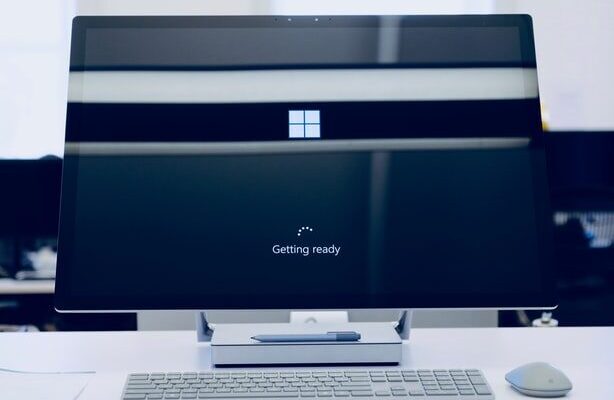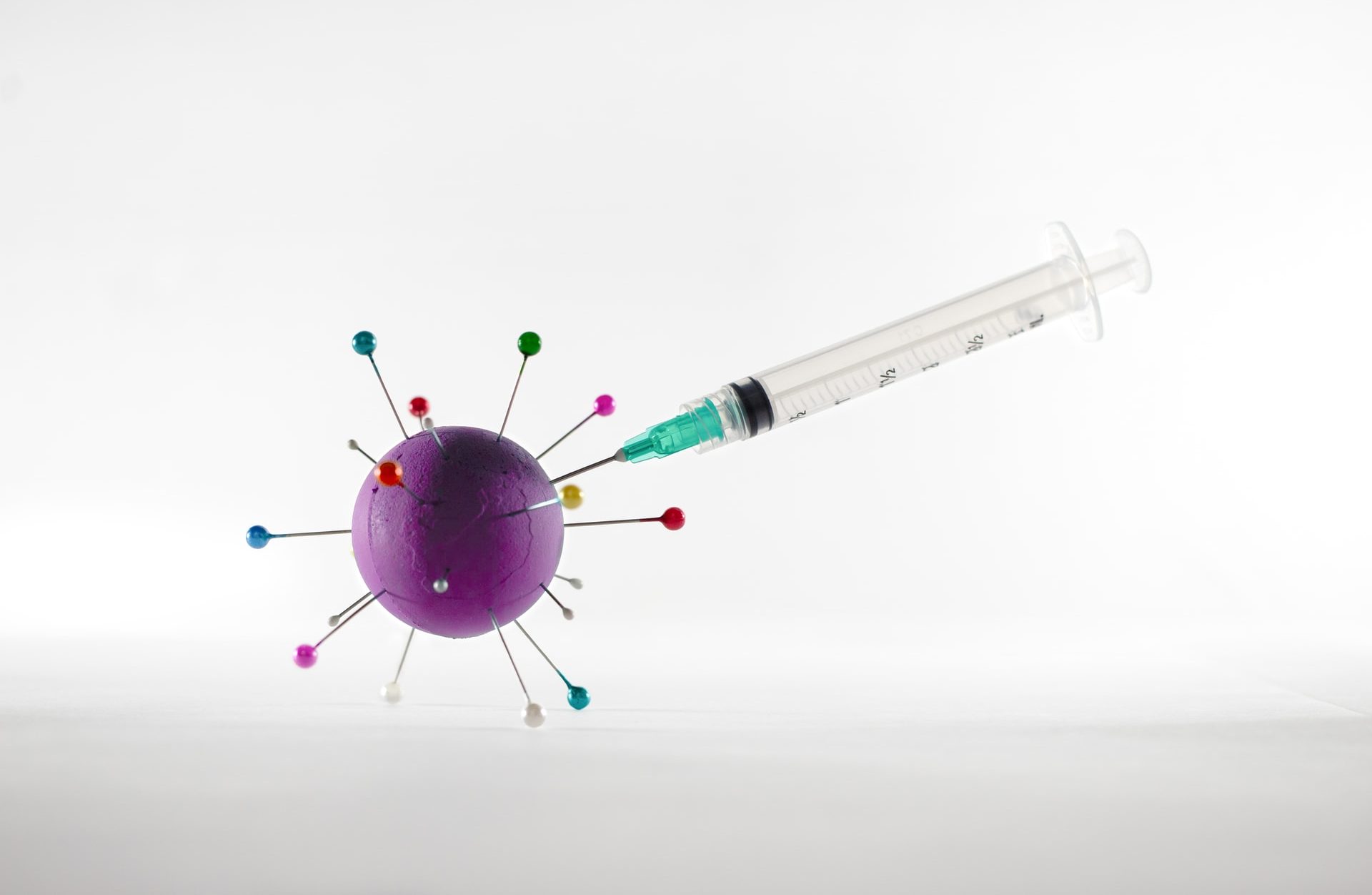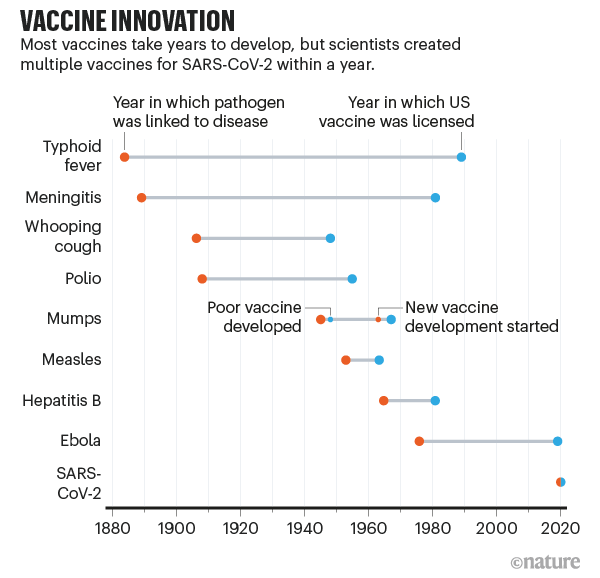On 31st Dec 2019, as the world geared up to welcome the next year, the Wuhan Municipal Commission in China reported a cluster of cases of pneumonia in Wuhan. Scientists eventually identified the novel coronavirus, better known to us as COVID-19. Just 55 days later, on 24th Feb 2020, the first Moderna vaccine shot went into a volunteer’s arm.
Moderna’s (and for that matter Pfizer’s) vaccines are a classic case of overnight sensation years in the making. In this article, we are going to look at Moderna’s unique business strategy and competitive advantages that enabled this spectacular success. But before we delve into all that, let’s understand the world of biotechnology that we are talking about.
What is a Biotech Company?
Historically, being a biotech company simply meant that you develop therapeutics. Traditionally in western medicine, companies have made drugs directly from chemicals. They were effective chemical companies that used chemistry to treat diseases. Think of companies like Pfizer, Johnson & Johnson, and Roche – they are a product of this era of medicine.
In the 1980s, scientists figured out ways to take genes from one species and move them to another. Using this genetic engineering, which at its most basic was something like cut and paste, companies developed new therapeutics. Companies like Genentech and Biogen grew up in this era.
Finally, we come to using DNA or RNA itself as the means to produce a drug. Moderna and BioNTech (which is Pfizer’s partner for the vaccine) are the pioneers of this era of medicine.
Hold on to your hats as we dive into the technical basis of this latest revolution next. Having located Moderna’s place in biotech history, let’s look into DNA, RNA, and the hero of our story and Moderna’s business strategy – mRNA.
What is mRNA?
What if I tell you that biology is not so different from computer science? Through four billion years of evolution, biology has figured out how to store instructions and information in cells through DNA. It effectively tells the cells what to do, just like code tells a computer what to do.
The alphabet of this biological language is four letters – A (adenine), T (thymine), C (cytosine), and G (guanine). Our DNA (deoxyribonucleic acid) consists of two helically interwoven strands of molecules with these nucleobases (ATCG) arranged in various specific sequences. Think of it like a hard drive that stores all the code. These sequences are genes and they behave like a set of instructions, determining everything about us. You know, the things which make Ryan Gosling look like Ryan Gosling, and make me look like, well, me.
But it’s not just about looks. These genes affect everything in our bodies. From a lot of our physiological processes and traits to the hormones and enzymes produced in our bodies, and even what diseases we are susceptible to – all of these could be the results of our genetic makeup.
RNA (ribonucleic acid) is pretty much similar to DNA, except that it has just one strand and some minor molecular differences. It is RNA’s job to transfer the instructions needed to make proteins.
Out of the several types of RNA, mRNA (messenger RNA) is the one that actually has the recipe for building a protein hidden in its instruction set. When an mRNA interacts with a cell, it basically tells the cell to produce a specific type of protein.
Moderna’s Masterstroke: Using mRNA as Medicine
In the 1990s, scientists began to wonder what could happen if this code was manipulated and used to send signals to our cells? Through the past three decades, technology has emerged from the scientific backwaters to become the cutting edge of biotech. Using this in-built technology from our bodies, scientists have developed an almost software-like process. We can encode a versatile set of instructions on mRNA molecules by changing the sequence of the ACTG alphabet.
The difficulty with using mRNA is that any manufactured mRNA is not going to be known to the body. So the body would almost instantaneously reject it.
But Moderna figured out how to protect the mRNA against rejection (using lipid nanoparticles) until it reaches its destination within the body and completes its job. Inside our body, the mRNA then teaches our cells to make whatever is needed to treat or prevent disease. Moderna calls mRNA ‘the software of life’.
Moderna’s History: A Decade Old Start-up
Moderna was founded in 2010 on the presumptuous notion that the human body could be harnessed to make its own medicine. One of the early big-name investors was AstraZeneca, providing $240 million for cardiometabolic and cancer drug research. Other names such as Alexion ($100 million in 2014) and Merck ($100 million in 2015) soon followed.
In 2015, after just 5 years of existence, Moderna became a clinical-stage company. It initiated the first Phase I study in human volunteers for an mRNA vaccine for H10N8.
Moving from strength to strength, the company went public with biotech’s biggest-ever IPO in 2018, securing a $7.5 billion valuation.
Three years later, with the success of the COVID vaccine under its belt, Moderna is trading at over $400. That puts the valuation at more than $160 Bn. Fast Company also named Moderna one of the most innovative biotech companies of 2021.
It took the company merely a decade since its start to get here, effectively a start-up in the midst of some of the oldest and biggest names in the pharmaceutical business. And while Moderna might be in traditional pharma territory now, its approach to the business could not be more different from the traditional pharma players.
Moderna generated total revenues of 803 million U.S. dollars in 2020, a massive increase compared to the previous year. In that year, the biotech company received income from product sales for the first time. This is, of course, because of the company’s breakthrough with its COVID-19 vaccine.

Moderna’s Business Strategy and Model
mRNA as a Platform Play
The problem with the pharmaceutical business, and the reason that it is so expensive, is that most medicines are just one-offs. This means that if a company or team comes up with aspirin for relieving headaches, they will not have a better chance of coming up with insulin to treat diabetes. They have to start at square one every time because they cannot leverage any core replicable process for that new drug to work.
But rather than trying to discover drugs from chemicals or proteins etc, Moderna made a huge bet on mRNA right from the beginning. By mimicking biology, Moderna can effectively hack the body into producing the protein itself, which can stop or reverse the disease. And the benefit of doing that was enormous because if that bet was successful, Moderna could use that mRNA technology multiple times in a row.
Ultimately mRNA is just the product. Moderna’s business strategy and model are based on creating a platform. These are systems that can be easily scaled and tailored for multiple different applications. The years of technological research and development that Moderna has undertaken, it has made the creation and testing of drugs and vaccines an almost programmable process.
Every time a new mRNA sequence needs to be created and tested, only the sequence is new. The manufacturing, the equipment, the process, everything else is the same. And Moderna has refined and scaled those for speedier development.
The thing that is cool about mRNA is it is really hard to make the first one, but then we can scale very quickly
Stéphane Bancel, the CEO of the company, told the Financial Times in September 2017
Technology and Infrastructure
The success of Moderna is based on two facets that the company has figured out exceedingly well – technology and infrastructure. This is a key part of Moderna’s business model, enabling massively parallel testing and research. Without any one of these, speed and scale would not be possible.
Moderna self-built a proprietary web application called the Drug Design Studio (DDS) which enables rapid design of multiple mRNAs. The user can literally select a protein as a starting point for research, and an algorithm then helps identify mRNA sequences best suited for specific medical effects.
This application is hosted with Amazon Web Services (AWS). To perform research on mRNAs can be very complex. But with the power of the cloud, Moderna can design multiple such mRNAs and then test them in parallel.
Moderna also uses automation and the Internet of Things (IoT) to drive accuracy, repeatability, and throughput in experimentation. Large-scale robotic automation reduces human errors and IoT enables real-time feedback and guidance to the scientists.
Finally, Moderna stitches all of this together with powerful analytics and AI. This helps them accelerate the learning cycle from the multiple experiments they run.
Massively Parallel R&D and the Resulting Network Effects
Realizing the massive upside in pursuing the mRNA approach, Moderna did not want the exploration to be limited by resources. Even with its stellar valuations and fundraising, Moderna was and is a start-up. Hence, it went into parallel R&D with multiple research partners to simultaneously run multiple mRNA programs. There are multiple benefits to this approach.
Other pharmaceutical companies typically require a lot of work to develop traditional new drugs. In mRNA’s case, Moderna and its partners can experiment with changing only a few components in their mRNA code quickly. This speeds up that process significantly. And this speed provides enormous ability to iterate towards the optimum solution in the early stages of expensive and expansive trials. Moderna has 24 mRNA development programs in its portfolio as per their 2021 financial report, targeting everything from the Zika virus to HIV to even cancer.
Further, Moderna has created multiple verticals through its partnerships. Since each different class of related diseases might require similar applications, once a few drugs in a vertical are proven, that can signal repeatability. It effectively de-risks that vertical. This is in contrast to traditional medicine, where even with closely related diseases, the application of each drug is wildly different, and no predictability exists.
Lastly, having built relationships with multiple R&D partners, Moderna has effectively created an ecosystem with strong network effects. Scientists within and across verticals share data and findings, growing the capabilities of the ecosystem multifold.
Fortuitous Timing
Ultimately, all strategies can fail if the timing is not right. Moderna arrived at the correct confluence of advancements in robotics, automation, AI, and the cloud. It utilized digitization across businesses to improve R&D to a point where it becomes almost industrial. This has helped reduce the time from ideation to market exponentially.
With AWS computational and integration capabilities, combined with our proprietary Drug Design Studio, our scientists can have an idea for a unique protein, order it online that day, and be running preclinical experiments on it in less than a month. In traditional pharmaceutical research and development, it would take years to get to the point where you are ready for even preclinical studies, much less testing your drug in humans.
Marcello Damiani, Chief Digital & Operational Excellence Officer at Moderna
All of this, of course, made it possible for Moderna to get the COVID vaccine ready in less than two months after discovery. Had COVID-19 come a decade earlier, no company and no govt would have been even close to ready.
 You will find more infographics at Statista
You will find more infographics at Statista
Moderna’s Unique Business Model and Strategy Could Change the Future of Medicine
No one had used mRNA in a drug or vaccine ever before COVID hit. Moderna and mRNA have become household names now, after its success with the vaccine. But Moderna’s business model and strategy were already a hit way earlier. The multitudes of private investors, the research partners, a massive IPO, and the overnight success of the vaccine, all prove that success.
Moderna ultimately made the right bet, not only to believe in mRNA as a drug but also on the focus it retained on developing and scaling the technology underlying the R&D.
The applications are limitless. And with the COVID vaccine, they have proven that the technology works. It could potentially change the future of medicine, effectively allowing scientists to create bespoke therapeutics.
Media everywhere has been fixated on the speed with which the COVID vaccine was brought to the markets. What people have not paid attention to, are the years of research and technological development that went behind this achievement. Moderna’s unique outlook and their belief in their business model have made that success possible. And this success of Moderna proves that moonshot investments are worth it.
Check out other articles by the author
-AMAZONPOLLY-ONLYWORDS-START-

Nike doesn’t sell shoes. It sells an idea with its marketing strategy!!
Nike has built one of the most powerful brands in the world through its benefit-based marketing strategy. What is this strategy and how Nike has used it?

Why do you never see any social media post from Apple?
Apple’s social media strategy is extremely unusual. In this piece, we connect Apple’s unique and successful take on social media to its core values.

Marketing Strategy that Revived the fate of Formula One
In the last few years, Formula One has come a long way, especially with its marketing strategy. Fans are now treated with respect and given equal importance.

Netflix – Constantly Pivoting its Business Model to Success
From postal to streaming to production, Netflix has constantly pivoted its business model to become the best in the entertainment industry.

How Microsoft became cool by making others cool
Microsoft CEO Satya Nadella said, “You join here, not to be cool, but to make others cool.” We decode the strategy powered by this statement.

LEGO – Powered by the Customers’ Inventiveness
Lego toys used technology innovation to transform. Lego is a story of successful open innovation strategies ever executed by a global brand.

WhatsApp Messenger – The Super Social Network for India?
WhatsApp is challenging the way we think about online social networks. Could it be the next super social network app for India?
-AMAZONPOLLY-ONLYWORDS-END-















